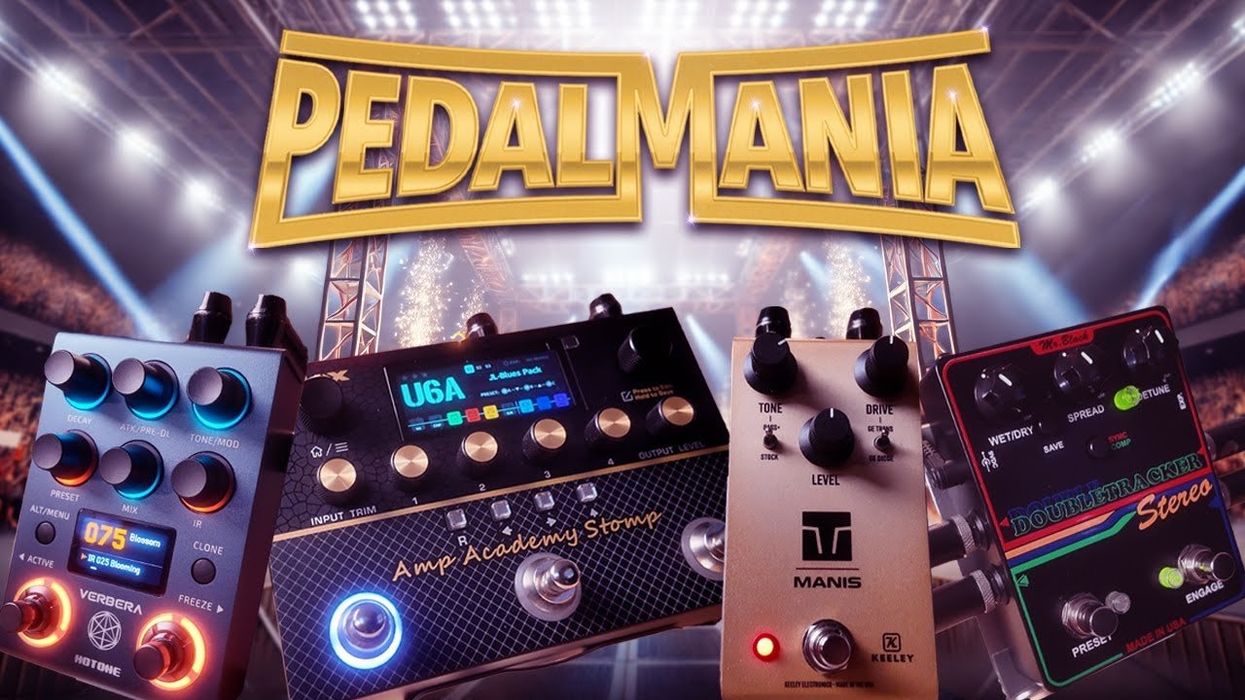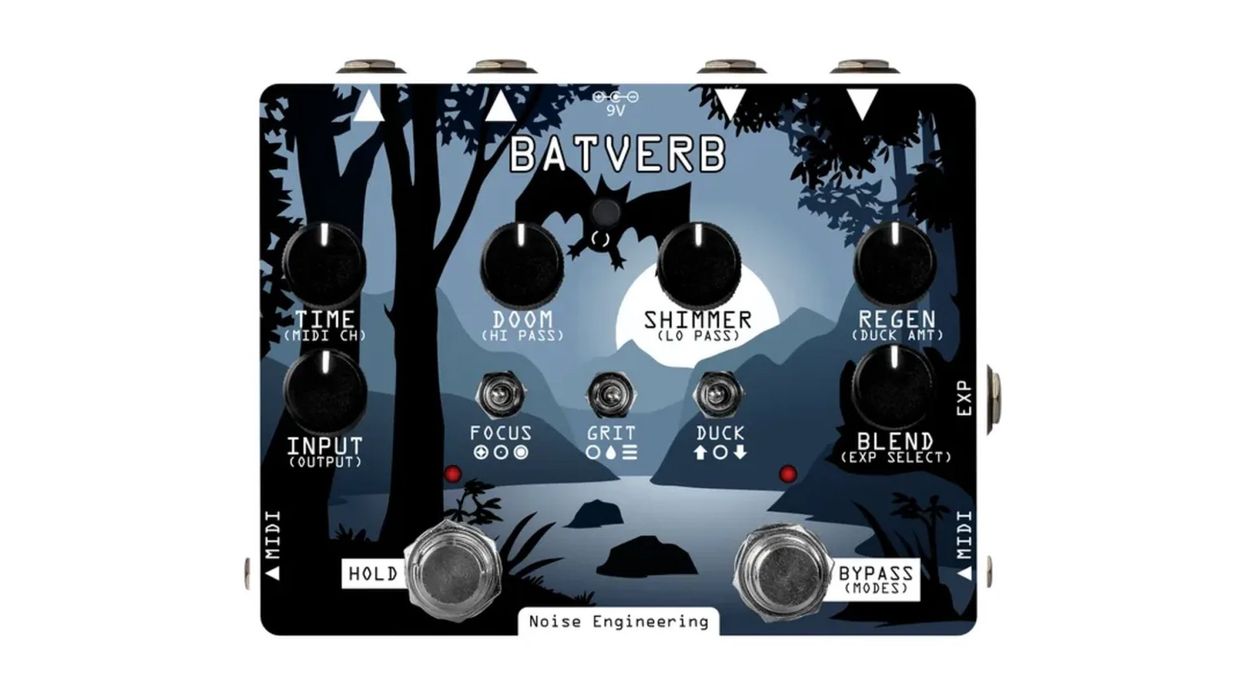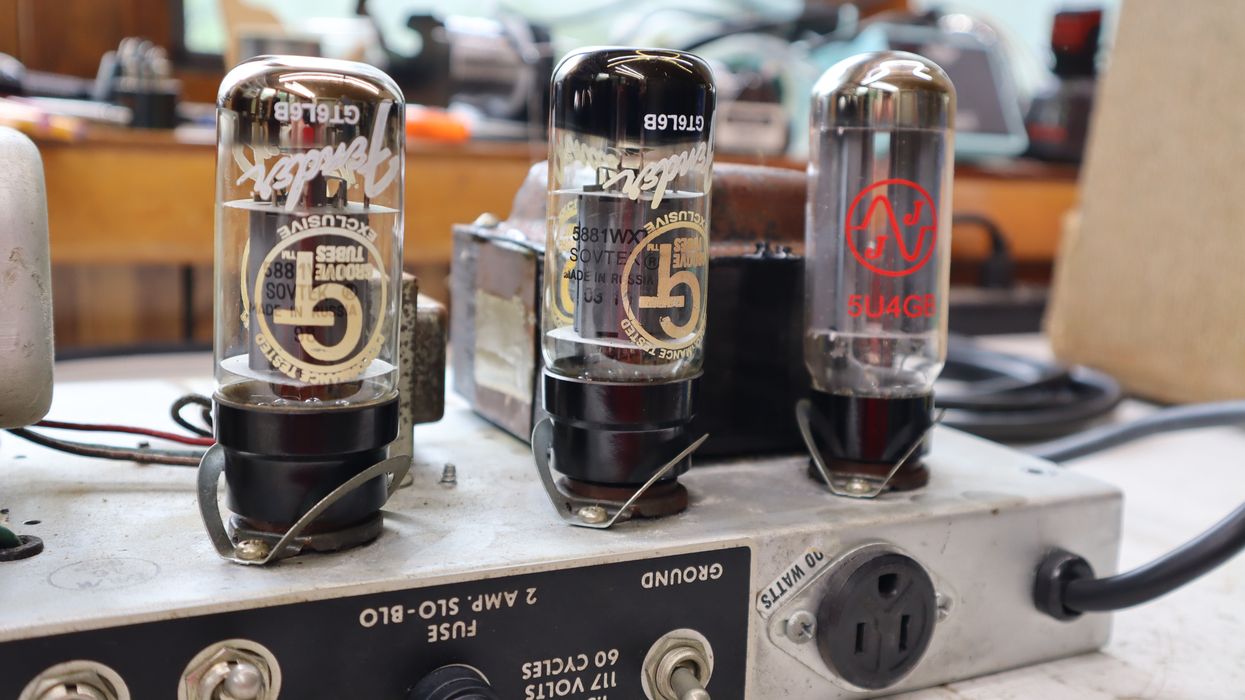It’s never been easier or less expensive to take part in the home recording experience. And Positive Grid’s newest entry into the interface market, called RIFF, exists at an impressive nexus of portability, functionality, and price. For around the cost of a decent overdrive, it’s a handheld audio interface that skips the bells and whistles for the sake of making a tool that just plain works.
The design is streamlined. The front of the unit is home to a backlit LCD screen and a multi-function push knob. There’s also a headphone output and audio input jack on the bottom along with an output jack on top next to a USB port. Setting up RIFF is a breeze. Apple Logic recognized the unit right away on my own computer, and because it’s powered via USB (or Lightning in iOS applications), you just plug in to your computer to power up. You can adjust four primary parameters: input gain, output gain, direct (which blends direct and processed tones coming from your computer for monitoring purposes) and tone, which cycles through three preamp emulations. The preamps are effective, though their overall effect and the differences between them can be subtle.
The recording quality of the RIFF is stellar. It handles 24bit/96kHz sample rates and there is little-to-no detectable latency. RIFF also comes bundled with the company’s BIAS FX 2 LE software for amp emulation, which makes RIFF a super fun way to practice on top of an incredibly handy recording setup.
Test Gear: Fender HSS Stratocaster, Fender Jazz Bass, Neural DSP Archetype: Cory Wong












![Devon Eisenbarger [Katy Perry] Rig Rundown](https://www.premierguitar.com/media-library/youtube.jpg?id=61774583&width=1245&height=700&quality=70&coordinates=0%2C0%2C0%2C0)




